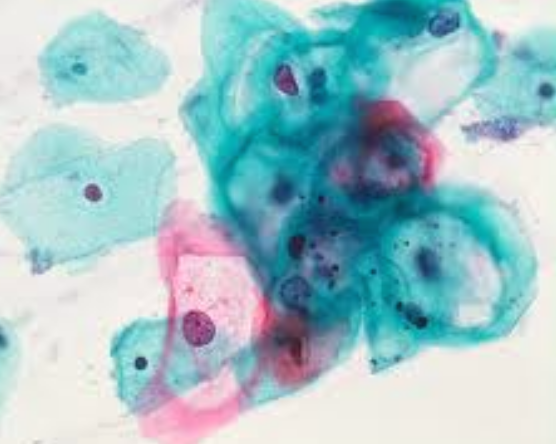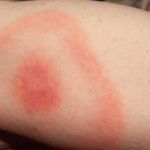Low grade squamous intraepithelial lesion is a type of anomalous formation of squamous cell on the topmost cover of the cervix. It is also known as ‘LGSIL’. Squamous cells are flat in shape, a type of epithelial cells that appear similar to scales. Epithelial cells help in absorbing, moving and distributing some of the nutrients and fluids in the body.
The cervix is a cylindrically-shaped small organ and a component of the uterus. The uterus is an empty gland that is situated in a woman’s body, where the egg gets implanted and the fetus develops.
There are different types of lesions viz., low grade squamous intraepithelial lesion and high grade squamous intraepithelial lesions. The expressions low and high grade indicate the amount of cervical area that gets affected by lesions, as well as the form of the anomalous cells. A high grade squamous intraepithelial lesionaffects a big part of the cervix and the cells show a high level of abnormality. Cases of low grade squamous intraepithelial lesions affect only a tiny part of the cervix and displays less number of abnormal cells.
Causes of low grade squamous intraepithelial lesion
- The common cause for low grade squamous intraepithelial lesions is infection or minor injuries that are getting healed. However, at times the reasons for low grade squamous intraepithelial lesion are hard to ascertain.
- A case of low grade squamous intraepithelial lesions will not always point to the growth of cancer. The formation of LGSIL is an indication of altered cells that may come up prior to the occurrence of cancer. Therefore, the development of low grade squamous intraepithelial lesionsacts as a warning signal and indicates that cervical cancer can develop at a later stage.
- It is necessary to remember that the possibility of diagnosing low grade squamous intraepithelial lesions with the help of the Pap smear method,where insidious cervical cancer is present, is below 1 percent.Also, no greater than 1 percent of females who suffer from low grade squamous intraepithelial lesion diagnosed through a Pap smear, will be adversely affected by cervical cancer in the next 2 years.

Diagnosis
- Medical experts will carry out various tests to confirm the occurrence of low grade squamous intraepithelial lesions.
- A Pap smear or a colposcopy can be used to diagnose low grade squamous intraepithelial lesions. Pap smear testsare used to determine the level of abnormality in cells. This is carried out by removing some of the free cells present in the cervix and coatingit on a glass slide. They are then studied under a microscope.
- In a colposcopy, a magnifying machine known as colposcope is used to investigate and study the cervix and vagina so as to diagnose the cause of low grade squamous intraepithelial lesions or LGSIL.
- It is possible for the medical experts to detect the occurrence of low grade squamous intraepithelial lesions with the help of biopsy that is carried out during a colposcopy test. In a biopsy, living cells are removed from the body and thoroughly studied in a culture, a technique where cells are grown artificially in a laboratory. These procedures help in the diagnosis of low grade squamous intraepithelial lesions.
Treatment of low grade squamous intraepithelial lesion
- Low grade squamous intraepithelial lesions may sometimes vanish on its own with no treatments. Still, treatments are determined only after detection of the abnormal state of the cells. If the lesions are detected, then medical experts usually opt for removal of these abnormal cells rather than waiting for it to disappear. This is because LGSIL may lead to formation of cancer.
- The aim of various treatments of low grade squamous intraepithelial lesions is to destroy and fully remove the anomalous cells in the cervix, thereby helping in the development of good cells in those areas where anomalous cellshad formed.
- Some other ways to destroy low grade squamous intraepithelial lesions are:
- Laser therapy
- Heat therapy
- Electrical current is applied on the abnormal cells
- Sub-freezing temperatures are applied on the lesions. It is necessary to keep in mind that sub-freezing temperatures cannot be used when low grade squamous intraepithelial lesions develop in the cervical canal. It is normally used when abnormal cells affect tiny portions of the exterior cervical canal.
- If large areas developlow grade squamous intraepithelial lesions, then they are generally curedthroughthe above given therapiesi.e. electrical current, laser and heat therapy. To define large areas affected by low grade squamous intraepithelial lesions measurements can be taken as follows:
- If the anomalous cells are more than ½ inch from the cervical bone
- They are more than an inch in width, and/or
- It occurs in more than 2 quadrants of the cervix
- If the above instances occur, then it can be diagnosed as low grade squamous intraepithelial lesions that affect large areas of the cervix.
- Various surgeries can help in complete elimination of the abnormal cells.


